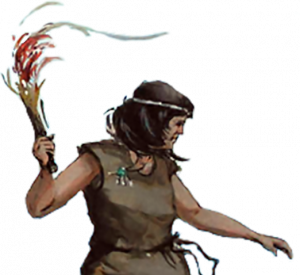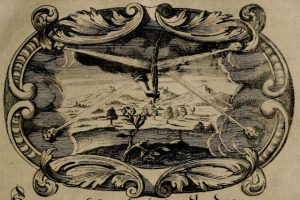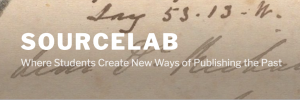We are living in a moment where we get to discover the exciting possibilities of working, learning, and sharing on digital formats. I have decided to use this as an opportunity to appreciate the ways in which others have already embraced the power digital platforms to enhance their research. In this post I will highlight three amazing digital humanities projects that researchers right here at the University of Illinois contributed to. For each project I will provide a link to their official web page, a brief description of the project, and the name and department of the UIUC researcher who contributed to this project. Prepare to be wowed by the amazing digital work to have come out of our University research community.

“Prepare to be wowed”- Owen Wilson
1.) The Lone Woman and Last Indians Digital Archive
This digital archive collects, annotates, transcribes, and maps over 450 documents relating to the story of the Lone Woman of San Nicolas Island. In the legendary true story, a young native American woman spent nearly 18 years completely alone between 1835-1853 on an island off the California coast. This project demonstrates how the unbelievable story traveled across the globe in newspapers and other forms of media. Visitors to the site can read newspaper articles from the late 19th and early 20th century on the Lone Woman that have been transcribed, annotated, and marked up with TEI encoding for key people and places mentioned in the text. Users can also play around with interactive maps that demonstrate how to story of the Lone Woman spread across the globe. This digital resource is a great way to not only educate yourself on the story of the Lone Woman but consider how stories like this one gained global recognition in a time period before digital connectivity. The editor of the Lone Woman and Last Indians Digital Archive is Sarah L. Schwebel, PhD, the director of the Center for Children’s Books right here at the University of Illinois. There are many other amazing contributors to the project from all across the country. Check it out! Learn a thing or two about true isolation and the power of a good story to connect the world.
Emblematica Online is a virtual library that contains 1,388 facsimiles of rare emblem books hosted by the University of Illinois Urbana-Champaign. The emblem books that make up the online collection are sourced from the University of Illinois Rare Book Library, the Herzog August Bibliothek, Wolfenbuttel, Glasgow University, Utrecht University, Duke University, and the Getty Research Institute. Users can browse emblems and books by date, place, collection name, and language. All books in the collection have been high-quality-scanned from cover to cover, giving patrons worldwide free access to rare and beautiful pieces of history that may otherwise be locked away in rare book libraries where the public cannot easily access them. The Principal Investigator of this project is Professor Mara R. Wade from the department of Germanic Languages & Literatures here at the University of Illinois Urbana-Champaign. The collection has been used by researchers worldwide in the fields of Renaissance Studies, Literary Studies, East Central European History, Early Modern Studies, and more. You can see a full list of affiliated publications on the Emblematica site. Get lost in some beautiful works of art and find inspiration for your next research project right from home!
3.) SourceLab
The creators of SourceLab saw a need for a high-quality and peer-reviewed way to publish newly digitized historical materials on a digital platform. Many digital historical materials lack the authority to be used in academic research because it is unclear where they came from. With SourceLab, students can submit projects to appear in their digital editions, which is then published on the open-access SourceLab page. The current addition has some fascinating projects, such as “The Story of Menstruation (1946): Teaching Menstrual Hygiene in American Classrooms” by Mariah Mendes Schaefer, which discusses a 1946 educational film from Walt Disney Animation Studios sponsored by Kotex about menstruation and hygiene. Each project is beautifully laid out on a webpage with written details and newly digitized historical media that guides the user through the materials elegantly. The Editor in Chief of SourceLab is John Randolph, Director, Russian, East European and Eurasian Center (REEEC) and Associate Professor of History at the University of Illinois at Urbana-Champaign. All of the contributors and editors of SourceLab are at our campus! SourceLab is a modern solution to a modern problem. It is also a great way to engage students in historical research, empower digital scholarship, and discover new things!
Ready to explore your own digital humanities project? Check out some of our resources to get you started:
- Scholarly Commons Digital Humanities Webpage
- Scholarly Commons Digital Publishing Webpage
- Grants, Fellowships, & Opportunities in Digital Humanities
- Library guides on Omeka, Scalar, and Text Mining Tools & Methods
- Contact our Digital Humanities Librarian, Spencer Keralis




